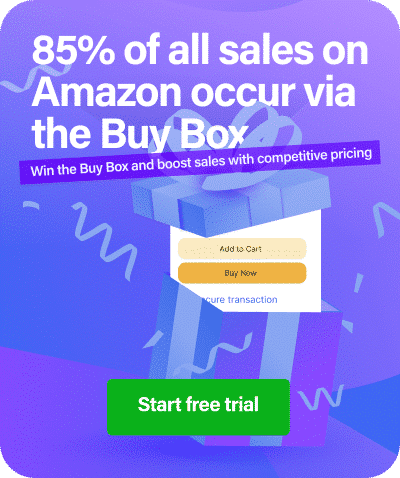How can Amazon sellers gain an edge in a crowded marketplace? The answer is (happily) a straightforward one. It’s all about effective Amazon competitor price analysis. By studying how your rivals set their prices, you can uncover opportunities, avoid common pitfalls, and shape a winning pricing strategy.
Why Competitor Pricing Matters on Amazon
Pricing is one of the most influential factors in winning the Buy Box. A strong competitor pricing strategy can help you remain competitive without sacrificing (all-important) profitability.
Here’s why:
- Buy Box Eligibility: Amazon considers price a major factor when deciding which seller wins the Featured Offer.
- Customer Perception: Shoppers compare multiple listings at once. Even a small difference in price can sway purchasing decisions.
- Market Positioning: Monitoring rivals highlights whether you should compete on price, quality, or a unique value proposition.
- Profitability Protection: Profit margin analysis helps avoid racing to the bottom while staying competitive.
- Strategic Flexibility: Understanding competitor moves allows you to adapt quickly to shifts in demand, seasonality, or promotions.
How to Analyze Competitor Pricing Effectively
Analyzing prices is more than comparing numbers – it’s about understanding your market positioning and creating a value proposition that resonates with shoppers – and it requires a structured approach.
Here’s the process:
- Identify direct competitors through Amazon market research
- Track competitor prices regularly to spot trends
- Evaluate product reviews and seller ratings alongside pricing
- Conduct profit margin analysis to avoid undercutting too aggressively
For a more in-depth breakdown of this, take a look at our guide.
Tools That Make Price Tracking Easier
Price tracking tools provide real-time visibility into market shifts. Automating this process reduces the risk of human error and means you never miss a pricing change (even when you’re away from home …or even asleep).
This is how sellers gain an edge, because automated repricing software can adjust prices instantly, so you win the Buy Box without triggering a price war.
Turn Competitor Insights into Results
Once you’ve collected the data, the next step is turning information into action.
When doing this, think about:
- Whether you adjust your pricing to undercut, or maintain higher prices with stronger branding
- Whether your goal is to gain short-term sales or build long-term profit stability
- Whether you can provide a point of difference – through shipping speed, bundles, or customer service, for example.
For a more detailed explanation, this article explains how competitor analysis (when done properly) can make a huge difference to your results.
Common Mistakes to Avoid With Competitor Analysis
Sellers often fall into these traps when analyzing competitor prices:
- Engaging in price wars that erode profits
- Ignoring costs when chasing the lowest price
- Overlooking customer value beyond pricing
Not sure how to avoid a price war while staying competitive? This guide should help you dodge any race to the bottom.
Key Takeaways and Next Steps
- Amazon competitor price analysis helps you make smarter pricing decisions
- Tools for pricing intelligence provide speed and accuracy
- Strategy should balance competitiveness with sustainable profit margins
- Avoiding destructive tactics like constant undercutting protects your long-term business health
So, where to start? Begin monitoring competitor prices consistently, use automated tools to stay ahead, and refine your strategy with a focus on both profit and customer value – and you’ll be flying in no time at all.
FAQs
What is Amazon competitor price analysis?
It is the process of researching, tracking, and comparing competitor prices on Amazon to identify opportunities and refine your pricing strategy.
How often should I track competitor prices?
Ideally, daily or in real time, which is why automation tools will help you respond quickly to market changes.
Does undercutting competitors always work?
No. Undercutting can damage profit margins and may lead to price wars. A balanced approach is more effective.
What tools help with price tracking?
Dedicated pricing intelligence software and Amazon repricers provide the most accurate and actionable insights.
How do I stay competitive without lowering prices too much?
Focus on your value proposition, such as superior customer service, bundled offers, or faster shipping.





